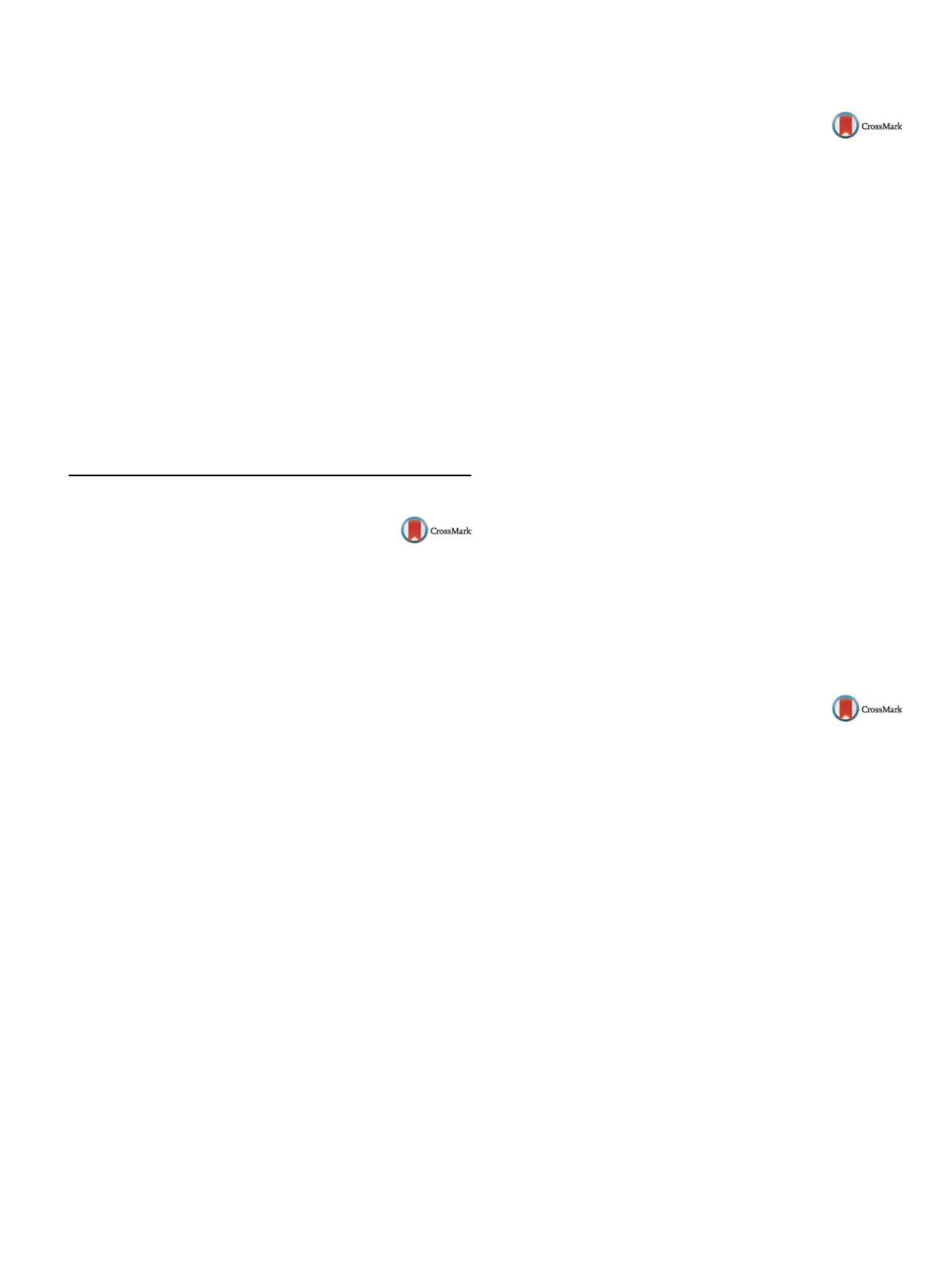

25th European Congress of Psychiatry / European Psychiatry 41S (2017) S583–S644
S627
Results
Concepts like identity clarity and identity value attri-
butions are closely related to psychological well-being and may
influence vulnerability or resilience to severemental illness. Simul-
taneously, these concepts are also regarded as closely linked to
social and cultural identity. Feelings of uncertainty between mul-
tiple existential positions that may arise for migrants (especially
if hierarchical and unequal relationships of power are established)
could compromise the sense of meaning and coherence of the self
and compromise identity structure, thereby predisposing to psy-
chotic experiences.
Conclusions
Even taking into account the heterogeneity of the
reviewed articles, there seems to be some consensus regarding the
importance of culture on how individuals experience themselves
and others and that preservation of a solid and coherent cultural
identity may be a crucial aspect to take into account when studying
resilience against severe mental diseases.
Disclosure of interest
The authors have not supplied their decla-
ration of competing interest.
http://dx.doi.org/10.1016/j.eurpsy.2017.01.1015e-Poster viewing: Neuroimaging
EV0686
Major depressive disorder comorbid
severe hydrocephalus due to Arnold
Chiari malformation in an apathetic
patient
A. Kandeger
1, H.A. Guler
2 ,∗
, O. Guler
31
Selcuk University, Psychiatry, Konya, Turkey
2
Selcuk University, Department of Child and Adolescant Psychiatry,
Konya, Turkey
3
Selcuk University, Department of Psychiatry, Konya, Turkey
∗
Corresponding author.
Objective
Arnold Chiari Malformation (ACM) is a disorder of
embryologic development that is characterized of herniation of
the cerebellar structures through the foramen magnum by four
types. ACM type 1 (ACM 1) consists in cerebellar tonsil herniation,
which is sometimes associated with other abnormalities, including
syringohydromyelia, hydrocephalus and skull base alterations. To
date, five cases of psychiatric disorders comorbid with ACM-I have
been reported. We here present an apathetic patient have delayed
diagnosis ACM-I and severe hydrocephalus and comorbid major
depressive disorder.
Case
A 36-year-old, male patient who is married and two chil-
dren, was admitted to hospital with don’t want to make anything,
despondency, thoughts of have an incompetency, uselessness and
want to death, tiredness, weakness complaints which are increased
day by day last 2months. He was diagnosed with major depression
after the psychiatric evaluation and hospitalised. He has unwilling-
ness, tiredness and headache complaints which are started when
he was 20 years old and he used antidepressant, anxiolytic, and low
dose anthipsycotic drugs under psychiatrist control at this years.
In radiologic evaluation, Arnold Chiari type 1 and severe hydro-
cephalus was detected in brain magnetic resonance imaging.
Discussion
ACM 1 is related to hydrocephalus as a result of pos-
terior fossa hypoplasia and causes spinal injury by obstruction to
cerebrospinal fluid (CSF) flow at the foramen magnum. Apathy is
a common yet often overlooked symptom in hydrocephalus. This
symptommay be a significant obstacle for cognition and quality of
life and is associated with increased level of depression.
Disclosure of interest
The authors have not supplied their decla-
ration of competing interest.
http://dx.doi.org/10.1016/j.eurpsy.2017.01.1016EV0687
Perfusion SPECT in the differential
diagnosis of dementia
D. Brigadeiro
∗
, J. Nunes , T. Ventura Gil , P. Costa
Hospital Sousa Martins-ULS Guarda EPE, Departamento de
Psiquiatria e Saúde Mental, Guarda, Portugal
∗
Corresponding author.
Dementia is a syndrome–usually of a chronic or progressive
nature–inwhich there is deterioration in cognitive function beyond
what might be expected from normal ageing (WHO). As the world
population ages, the number of people afflicted with dement-
ing illnesses will increase. This neurodegenerative disease is one
of the major causes of disability and dependency among older
people worldwide. Brain single-photon emission computed tomo-
graphy (SPECT) allows the study of regional cerebral blood flow,
providing functional information. Each of the different types of
dementia has a distinct blood flow pattern that is revealed with
SPECT imaging and which can be used for differential diagnoses.
This imaging technique can also be used to differentiate dementia
from pseudodementia. The use of SPECT has been recommended in
various guidelines to help in differential diagnosis of dementia. The
National Institute for Health and Clinical Excellence in the UK rec-
ommend the use of SPECT or positron emission tomography (PET)
to help differentiate Alzheimer’s disease (AD) from frontotempo-
ral dementia and vascular dementia when there is diagnostic doubt
(NICE, 2006). The European Federation of the Neurological Societies
guidelines for diagnosis also supports the use of FDG-PET (18F fluo-
rodeoxyglucose positron emission tomography) or perfusion SPECT
when clarifying a diagnosis of AD. This review describes the utility
of perfusion SPECT in differential diagnosis of neurodegenerative
dementias.
Disclosure of interest
The authors have not supplied their decla-
ration of competing interest.
http://dx.doi.org/10.1016/j.eurpsy.2017.01.1017EV0688
Examining the clinical utility of
neuroimaging on an inpatient
psychiatric unit
L. Gonzalez
∗
, M. Mashayekh , W. Gu , P. Korenis , A. Khadivi
Bronx Lebanon Hospital Center, Psychiatry, Bronx, USA
∗
Corresponding author.
Introduction
Recent developments in neuroimaging have rev-
olutionized medicine and aided in our understanding of how
biological abnormalities may contribute to clinical presentation.
While such advances have begun to enhance our knowledge
about the timing of abnormalities, it remains unclear at this time
how neuroimaging impacts the clinical course of the patient. In
addition, much debate exists regarding the clinical necessity of neu-
roimaging for psychiatric conditions, and there are contradictory
reports and guidelines for the application of conventional brain
imaging (MRI and CT) in the evaluation of patients with mental
illness.
Objective
We aim to review the clinical utility of neuroimaging
in an acute psychiatric setting, and hypothesize that there will be
no significant differences between the outcome of neuroimaging
and clinical course for patients.
Method
We conducted a retrospective chart review of adult
patients who were diagnosed and treated for psychiatric condi-
tions on an inpatient psychiatric service over a period of 36months
July 1, 2013–June 30, 2016.
Conclusions
While imaging advances have added to our under-
standing of biological abnormalities and can aid in ruling out
organic causes of psychiatric illness, at this time it is not guiding
clinical management for patients.


















